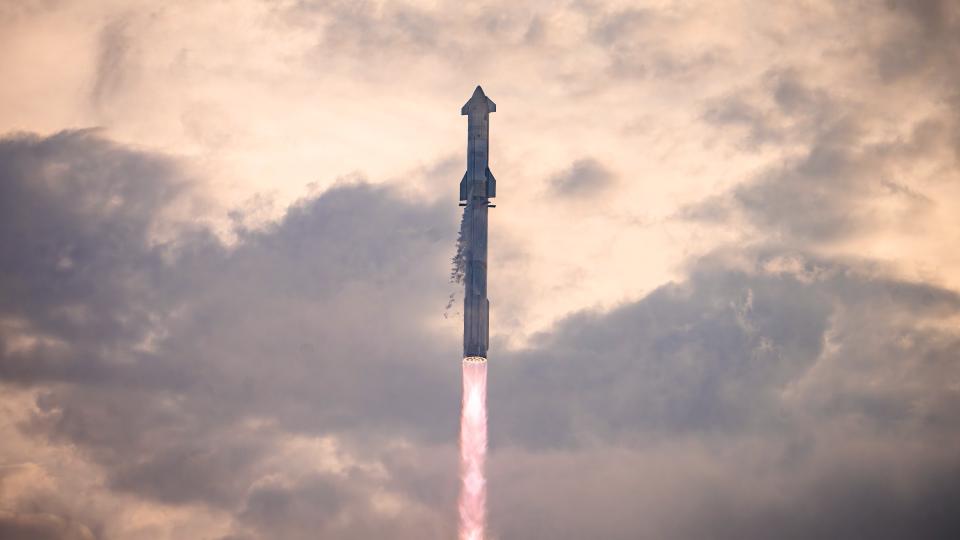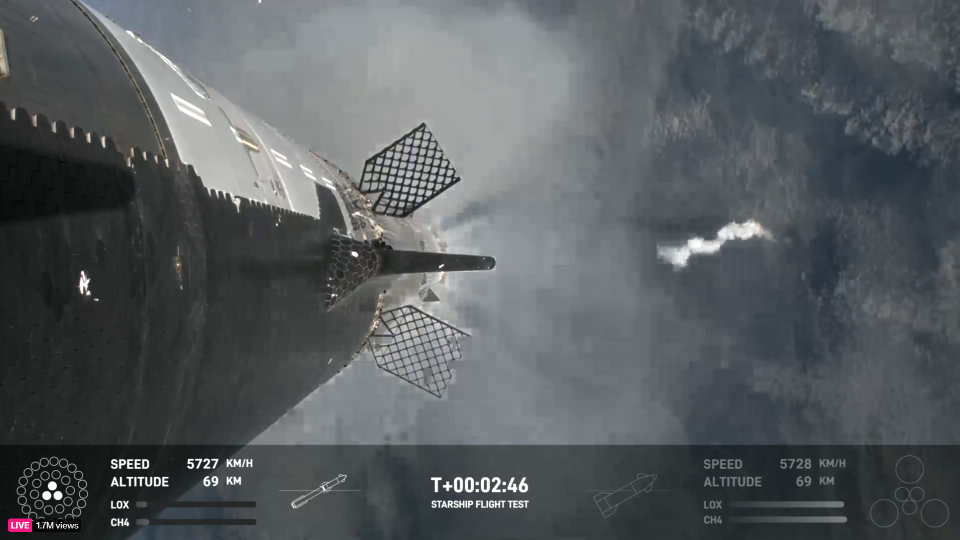SpaceX’s Starship, the world’s largest rocket, will get even bigger as the company continues to focus on future Mars missions.
Elon Musk, the billionaire founder of SpaceX, told employees on April 4 that Starship will eventually be as tall as 500 feet (150 meters), about 20 percent higher than the massive system currently aboard the Super Heavy rocket.
Additionally, advances in reusability, Musk predicted, will cost about $3 million each; that’s less than a third of the cost of a (much smaller) Falcon 1 rocket launch in 2004 when inflation is taken into account. (The figure two decades ago was $5.9 million, according to NBC, which is about $9.5 million in 2024 dollars.)
“These are unimaginable numbers,” Musk said in the Starship update, which was released publicly April 6, about a month after the third and final test flight to date. “No one ever thought this was possible, but we’re not breaking any physics to achieve this. So this is within the limits, without breaking physics. We can do this.”
Related: SpaceX launches massive Super Heavy booster ahead of 4th Starship test flight (photos, video)

Musk usually delivers Starship updates at least once a year to highlight the company’s progress toward its long-term plans to settle Mars. In fact, there have been three Starship launches in the past year, so there has been some recent progress. Musk, however, did not address the delays in launching Starship that helped push back the launch date of the first lunar landing under NASA’s Artemis program.
SpaceX was named the vendor for the Artemis 3 landing mission which was, until recently, set for 2025. In January, NASA chose to hold the launch date another year, to 2026, due to a range of technical issues. Apart from Starship not being ready – the agency needs several successful launches before it is approved for astronaut flights – Artemis 3 has also been delayed by slow progress on spacesuits and problems with the mission’s Orion spacecraft, in among other factors.
However, Musk’s words about Artemis, to employees, focused on Starship’s future capabilities: orbiting Earth and refilling its tanks, both of which have yet to be proven on its three test flights.
“This … will be very important for the Artemis program for NASA to go back to the moon,” Musk said of those capabilities. He also envisions a “Moon Base Alpha” that would include ships “specialized in going to and from the moon”, meaning there would be no heat shield or flaps due to the lack of atmosphere.
Related: NASA is celebrating the 3rd SpaceX Starship test flight, but more work is needed before the Artemis moon missions


Musk’s 45-minute speech covered the usual themes of his Red Planet updates, focusing on how to eventually ship a lot of cargo out there for settlers. He noted that it would take thousands of sails to make; for perspective, Musk said the company has completed 327 successful Falcon series launches and about 80 percent of those had reused boosters (a key cost-cutting factor.)
SpaceX is the most active launch entity in the world, and Musk predicts that the company will send about 90 percent of the orbital mass up this year compared to 6 percent in China (the second largest entity).
Starship’s next first and fourth spaceflight attempts, expected in May, aim to land the first stage of Super Heavy “essentially on a virtual tower” in the Gulf of Mexico, Musk said. Once the company has done that safely, they will consider using the launch area at Starbase, in southern Texas, for future landings as soon as Flight 5. on Flight 4 at 80% or 90%).
Musk also wants to perform two successive splashdowns of the Starship’s upper stage, in a controlled manner, before sending it to Starbase on a future flight. “We don’t want to rain debris over Mexico or the US,” he said. “My guess is probably next year when we’ll be able to use Starship again.”
RELATED STORIES:
— SpaceX’s dying rocket creates an eerie ‘dashed’ line in new photos. What to expect?
— SpaceX launches advanced weather satellite for US Space Force (video)
— SpaceX rocket launches 11 satellites, including one for South Korea, on Bandwagon-1 rideshare flight (photos)
Overall, Musk plans to launch multiple Starships this year, and suggests that SpaceX will build an additional six spacecraft by the end of 2024. A new rocket factory for the company should be available in 2025, allowing for faster production yet.
Future versions of Starship will include “Starship 2” to send 100 tons of payload to low-Earth orbit and the 500-foot “Starship 3” for 200 tons or more. Bigger vehicles, Musk emphasized, mean fewer (four or five) refueling missions in low Earth orbit to prepare starships for the trip to Mars someday.
Of those milestones, Musk said it would be “very much a success-oriented schedule.” His speech did not mention the Federal Aviation Administration, which must approve each of the launches, or continued criticism of Starship’s environmental impact on the ecologically sensitive area near Starbase.
That impact may continue to grow, as Musk said it would take about 10 launches per day to send hundreds of vehicles to Mars every two years (when the planet is closest) to make a long-term settlement possible. As for the number of people bound for Mars, that’s about a million people, he said — which matches predictions he’s made at least as far back as 2017. Musk also says he wants the settlement put going “in 20 years.” He said the same thing in 2011.